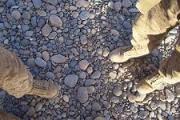I don't get "bias as a verb, but I'll use another approach anyway.
Wilf, I respect you in tactical matters, but you need to think farther.
Keep in mind the enemy reacts. How will he react to helicopter-mobile(/-dependent) occupation infantry?
I pointed at the truck convoy dependency as an indicator for the inability to dodge the road ambush problem entirely. Targets are available for the Taliban in abundance, and they can simply focus on the supply convoys and less on the patrols at will.
Remember the IED effect on patrols, especially in cases where no MRAPs/helicopters are available (or practical): The mere threat suffices at times to restrict the troops actions. It may be a subconscious influence, but it's there. Especially the less zealous contingents and troops might even consider to minimize patrol activity.
Such a restriction success could also be attempted in regard to fuel supplies. The less fuel transports reach the base, the less helicopter sorties.
The counter-counter-measure? Convoy escorts. There we are again, vehicles running the gauntlet. Except that this time there hasn't been much effort directed at road control and sweeps as would have been if road movement was still standard.
Meanwhile, the civilian populace knows the foreign troops only from helicopters and foot patrols while the Taliban move at will in Toyota Land Cruisers.
Who looks like a winner and in power? Those who venture out of their fortresses only through the air or those who dare to go everywhere?
















Bookmarks